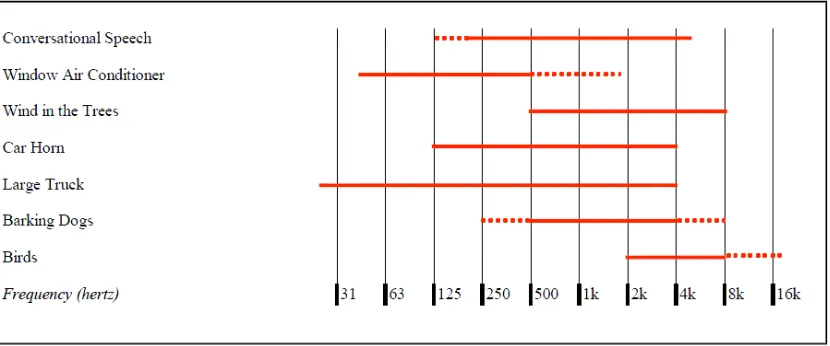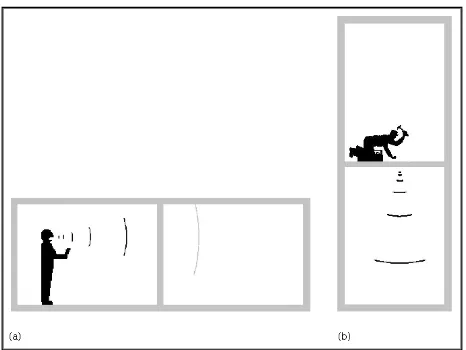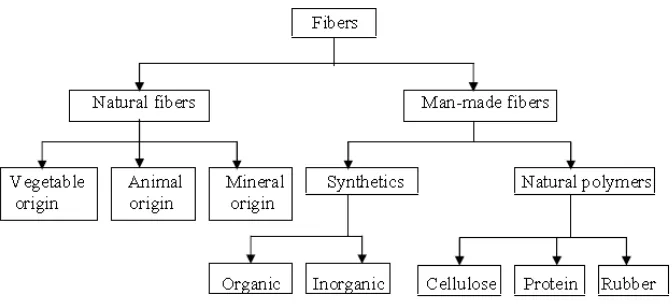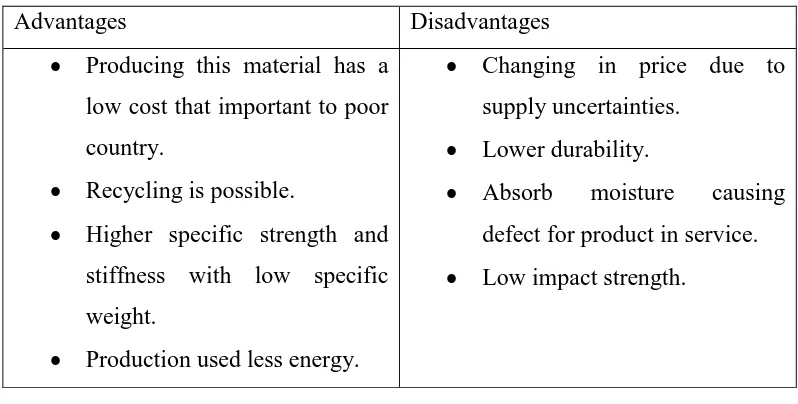SUPERVISOR DECLARATION
“I hereby declare that I have read this thesis and in my opinion it is sufficient in
terms of scope and quality for the award of the degree of Bachelor of Mechanical Engineering (Structure and Material)”.
i
INVESTIGATION ON THE PERFORMANCE OF A HYBRID MICROPERFORATED PANEL-NATURAL WASTE FIBRE AS AN
ECO-FRIENDLY SOUND AND NOISE BARRIER
DG HAFIZAH BINTI KASSIM
This report is submitted to Faculty of Mechanical Engineering as a requirement to get award of
Bachelor Degree in Mechanical Engineering (Structure & Materials)
Faculty of Mechanical Engineering Universiti Teknikal Malaysia Melaka
ii
DECLARATION
“I hereby declare that the work in this report is my own except for summaries and quotations which have been duly acknowledge.”
Signature : ...
iii
To my parents, My supervisor, and to all my friends.
iv
ACKNOWLEDGEMENT
First I would like to express my grateful to ALLAH S.W.T. as for the blessing given that I can complete my final year project. In preparing this paper, I have been involved with many people in helping me to complete this project.
I am grateful and would like to express my sincere gratitude to my supervisor Dr. Azma Putra, to the preliminary ideas, invaluable guidance, continuous encouragement and continuous support in making this research possible. I appreciate his consistent support from the beginning till the end of this project. This gratitude is also for En. Ahmad Yusuf Ismail due to his guidance and help during the experimental and laboratory work. Thanks to all my lab mates, members and staff of the Mechanical Engineering Department of Universiti Teknikal Malaysia Melaka who helped me in many ways during the project.
I acknowledge my sincere gratitude to my parents for their love, dream and sacrifice throughout my life. I cannot find the appropriate words that could properly describe my appreciation for their devotion, support and faith in my ability to attain my goals. Special thanks should be given to my committee members. I would like to acknowledge their comments and suggestions, which was crucial for the successful completion of this final year project.
v
TABLE OF CONTENT
CHAPTER TOPIC PAGE
SUPERVISOR DECLARATION
TITLE PAGE i
DECLARATION ii
DEDICATION iii
ACKNOWLEDGEMENT iv
TABLE OF CONTENT v
ABSTRACT viii
ABSTRAK ix
LIST OF TABLES x
LIST OF FIGURES xi
LIST OF ABBREVIATION AND SYMBOLS xiii
CHAPTER 1 INTRODUCTION 1
1.1 Sound and Noise 1
1.1.1 Sound Absorption 3
1.1.2 Sound Insulation 3
1.2 Natural Fibre 4
1.3 Problem Statement 6
1.4 Objectives 8
vi
CHAPTER 2 LITERATURE REVIEW 9
2.1 Airborne and Structure – Borne Sound 9
2.2 Sound Transmisson Loss 10
2.3 Natural Fibres As “Green” Sound Absorber 15 2.4 Microperforated Panel As “Green”
Sound Absorber 18
2.5 Measurement Method for Sound
Transmission Loss 20
2.5.1 Impedance Tube Method 20
2.5.2 Reverberation Chamber Method 22
CHAPTER 3 METHODOLOGY 24
3.1 Flow Chart of Methodology 24
3.2 Sample Preparation 25
3.2.1 Preparation of Natural Fibre 25 3.2.2 Preparation of Microperforated Panel
(MPP) 27
3.3 Experimental Apparatus 29
3.3.1 Impedance Tube 29
3.3.2 Microphone and Amplifier 32
3.3.3. Signal Analyser 32
3.3.4 Noise Generator 33
CHAPTER 4 RESULTS AND ANALYSIS 34
4.1 Microperforated Panel (MPP)
Experimental Data 34
4.2 Results of Transmission Loss (TL) for
Coir Fibre 37
4.3 Results of Transmission Loss (TL) for
Sugarcane Fibre 41
4.4 Comparison between Transmission
vii
CHAPTER 5 DISCUSSION 49
5.1 Microperforated Panel (MPP) 49
5.2 Transmission Loss (TL) Of Coir Fibre 50 5.3 Transmission Loss (TL) For
Sugarcane Fibre 52
5.4 Comparison between Transmission
Loss for Coir and Sugarcane Fibre 53
CHAPTER 6 CONCLUSION AND RECOMMENDATION 54
REFERENCES 56
viii
ABSTRACT
Noise can cause disruption to one’s health when noise exposure levels are exceeding the certain limits. To reduce the sound and noise disturbance, new material has been developed as the potential sound absorption material. Conventional absorber is expensive and deteriorates through time. Recent development of natural fibre is increasing after their acoustic performances have been explored. Furthermore, the abundance source of fibre in Malaysia made fibre as the sustainable material for the sound absorption panels. In addition to the research, the researchers also find the employment of the microperforated panel (MPP) replacing the synthetic porous material. The objective of this project is to investigate the performance of a coupled absorber consisting of microperforated panel (MPP) and natural fibre. Coconut and sugarcane fibre are introduced in this study to be coupled with microperforated panel (MPP). The results obtained from the experimental tests by using impedance tube method show that both fibre has increase the transmission loss of the hybrid microperforated panel (MPP)-natural waste fibre at low frequency range but decrease at frequency more than 1000 Hz. Coir fibre enhance transmission loss (TL) performance at 300 Hz to 800 Hz while sugarcane fibre at 300 Hz to 600 Hz. Particularly, for noise source which is predominant at low frequencies below 1 kHz.
ix
ABSTRAK
x
LIST OF TABLES
NO TITLE PAGE
1.1 Advantages and disadvantages of natural fibres. 6 2.1 Comparison of various material noise properties at 1000 Hz. 14 2.2 Acoustical properties (absorption) of some conventional
natural fibres. 16
xi
LIST OF FIGURES
NO TITLE PAGE
1.1 Frequency range of typical sound sources. 2
1.2 Inter-relationship between the elements of noise. 2 1.3 Airborne sound (a) an impact sound insulation (b) between
two rooms. 4
1.4 Classification of fibre. 5
2.1 Transmission loss (TL) of a single wall is estimated from its weight per unit area (or surface weight) and frequency of the
incident sound. 13
2.2 Sound reduction index for a 125 mm thick wall with 100 mm
insulation material. 16
2.3 Ecoinvent, Comparison of environmental impacts of traditional
and natural materials. 17
2.4 Microperforated panel used in reception area;
insert shows perforation 19
2.5 Microperforated panel absorber used in engine compartment
of a boat. 19
2.6 Photograph showing microperforated panels with circular and
slit-shape perforations 19
2.7 Schematic diagram of the impedance tube for measuring sound
transmission loss. 19
2.8 Sound transmission loss measurement impedance tube. 19
2.9 Schematic configuration of the test set-up. 20
xii
3.1 Flowchart for the methodology. 25
3.2 (a) Industrial treated coir fibre, (b) Sugarcane waste fibre. 26 3.3 Extracted fibres (a) Coir fibres (b) Sugarcane fibres. 27 3.4 (a) Fibre placed inside the mould (b) Hot press of a natural fibre. 28
3.5 (a) coir fibre, (b) sugarcane fibre. 28
3.6 Aluminium microperforated panel (MPP). 29
3.7 Arrangement of fibre and MPP inside sample holder. 30
3.8 Home-made impedance tube. 31
3.9 Schematic design of sound transmission loss impedance tube. 31 3.10 Schematic arrangement of the experimental setup. 32
3.11 Equipment used in the two microphone method. 32
3.12 Microphone attached to amplifier. 33
3.13 RT. Pro Photon 6.34 Signal Analyzer. 34
3.14 The Audacity 1.3. 34
4.1 Effect of holes diameter with the same perforation
ratio (τ = 0.5 %). 36
4.2 Effect of perforation ratio with the same
holes diameter (d = 0.5 mm). 36
4.3 Effect of binder content for coir fibre (a) 2.5 g (b) 5 g. 38
4.4 Effect of weight for coir fibre. 39
4.5 Comparison between 2.5 g and 5 g of coir fibre with the same
percentage of binder content (a) 0 % (b) 10 % (c) 30%. 40 4.6 Effect of binder content for sugarcane fibre (a) 2.5 g (b) 5 g. 42
4.7 Effect of weight for sugarcane fibre. 43
4.8 Comparison between 2.5 g and 5 g of sugarcane fibre with the
same percentage of binder content (a) 0 % (b) 10 % (c) 30%. 44 4.9 Comparison between 2.5 g coir and sugarcane fibre with variation
of binder percentage (a) 0 % (b) 10 % (c) 30 %. 46
4.10 Comparison between 5 g coir and sugarcane fibre with variation
of binder percentage (a) 0 % (b) 10 % (c) 30 %. 48 5.1 Effect of natural fibre insertion as the back cavity. 50 5.2 Characteristic transmission loss of a bounded, homogeneous
xiii
LIST OF ABBREVIATION AND SYMBOLS
kHz = kilohertz
NRC = Noise Reduction Index MPP = Microperforated panel TL = Transmission loss
STL = Sound Transmission loss
m = Meter
kg = kilogram dB = Decibel
STC = Sound Transmission Class mm = Milimeter
ft = feet
º C = Degree Celsius
% = Percent
d = Diameter
1
CHAPTER 1
INTRODUCTION
1.1 SOUND AND NOISE
Every day we are exposed to sound either it is not required, necessary, or beneficial, twenty-four hours a day, seven days a week. In a physical way, there was no different between sound and noise. Sound is a sensory perception by human [1] which it is can be define as a pressure variation that travels through air (wave) and can be detected by the human ear [2]. Sound wave that travels through air is the resulting of the physical disturbance of air molecules such when tapping a tuning fork and the waves will combine to reach the listener direct or indirectly [3].
2
Figure 1.1: Frequency range of typical sound sources.
Noise is defined as excessive or any unwanted sound considered by human ear [1, 4, 5] which can possibly cause annoyance or hearing loss [2]. Figure 1.1 shows the frequency range of the typical sound sources in our daily life. Noise can be related to three different elements namely the source, the receiver and the transmission path [5] that can be seen at Figure 1.2. Transmission path commonly comprise of air or any structural material.
[image:16.595.219.457.446.617.2]3
Additionally, noise may be continuous or discontinuous with high or low frequency as long as it is undesired for normal hearing. Design solution for noise is done by recognizing characteristics of main element that play a major role and also the sound transmission path.
1.1.1 Sound Absorption
Every material has its own ability to absorb sound energy. Material that has low absorption ability tends to reflect most of the acoustical energy and vice versa. Sound absorption is a capability of a material to convert sound energy into other energy. This energy is usually converted to heat energy [6]. The property of a material absorbing ability is called sound absorption coefficient at a particular frequency range.
Absorption material in building usually used Noise Reduction Coefficient (NRC) with the average sound absorption coefficient range of 250 Hz to 2 kHz with NRC of 1.0 as perfectly absorptive and NRC of 0.0 as perfectly reflective for its scale [3].
1.1.2 Sound Insulation
4
Figure 1.3: Airborne sound (a) an impact sound insulation (b) between two rooms.
1.2 NATURAL FIRBE
Fibres are continuous filaments or a discrete elongated material that belong to a hair-like class. It can be spun into filaments, thread or rope. Fibre can be classified into two main groups, which are natural fibre and man-made fibre [9]. The two main groups can then be further subdivided into smaller parts. In general, natural fibres can be subdivided as to their origin such as plants, animals, or minerals, whereas man-made fibres can be subdivided to synthetic and natural polymers [10]. Producing a product such as door, parcel shelves or interior sunroof shield required natural fibre to be combined with polypropylene, polyester, or polyurethane [11].
5
Figure 1.4: Classification of fibre.
Natural fibre can be directly translated from its word as produced through agriculture. It is a composite materials constructed by the environment. Fibre consists usually are rigid, crystalline cellulose microfibril-reinforced amorphous lignin and hemicellulose matrix. Almost all of plant has a composition of cellulose, hemicellulose, lignin, waxes and some water soluble compounds. From this entire component, only three become the major which is cellulose, hemicellulose and lignin [10].
Natural fibres from vegetable fibres are obtained from the various parts of the plants. Three categories are made to classify the fibre according to the part which it have been extracted. The categories are bast or stem fibre (jute, sugarcane, banana), leaf fibres (sisal, pineapple) and fruit fibres (cotton, coir, oil palm) [12, 13].
6
The major chemical component of a living tree is water. But on a dry weight basis, all plant cell walls consists mainly of sugar-based polymer (carbohydrates) that are combined with lignin lesser amounts of extractives, protein, starch and inorganics [10]. Chemical components on plants are different depends on geographic locations, ages, climate and soil conditions where all the components are distributed throughout the cell wall that composed of primary and secondary wall layers. Main components in plant fibre such as; cellulose, hemicellulose, and lignin and minor components such as pectin, waxes and water soluble substances contribute to the overall properties of the fibres.
[image:20.595.119.518.357.559.2]There are several advantages and disadvantages of natural fibres that described on Table 1.1 below.
Table 1.1: Advantages and disadvantages of natural fibre.
Advantages Disadvantages
Producing this material has a low cost that important to poor country.
Recycling is possible.
Higher specific strength and stiffness with low specific weight.
Production used less energy.
Changing in price due to supply uncertainties.
Lower durability.
Absorb moisture causing defect for product in service. Low impact strength.
1.3 PROBLEM STATEMENT
7
These days, sound absorbing components are commonly used in the building construction industry which consists of synthetic materials. Synthetic materials are substance that produce by chemical process rather than formed naturally. Current sound absorption materials for acoustic treatment used in the building construction industry consist of glass or mineral-fibre materials [15]. For a long time now, these materials become more dominance in the commercial market. However, fibre shedding from glass or mineral-fibre materials caused health risk related to human lungs and eyes [15]. It is eminent to make research on the alternative material in the way of eco-friendly and less harmful to environment. However, not many research done to discover new material with sound absorption application.
Malaysia has an extensive agricultural waste such as coir fibre (Cocos nucifera), rice fibre (Oryza sativa) and oil palm frond fibre (Elaeis guinnesis). The fibre is usually burned or turned into agricultural by-products. Furthermore, those fibres are suitable as a substitute for acoustic absorption purpose [15]. Study was made on the coir fibre showed that the coir fibre is very useful to be used on the structural and non-structural application. Those studies, was initiated to implement analytical techniques for illuminating the acoustical characteristics of coir fibre absorber panel. This recent study is also a part of that initiate to explore the possible approaches for enhancing the absorption coefficient [16].
8
1.4 OBJECTIVE
This project is aimed to investigate the sound insulation performance of a hybrid fibre-microperforated system in terms of the sound transmission loss.
1.5 SCOPE
9
CHAPTER 2
LITERATURE REVIEW
2.1 AIRBORNE AND STRUCTURE - BORNE SOUND
The original source of noise is usually identified prior to installation of insulation or absorption materials, but sometimes it is difficult to determine how sound travel from the source to a receiver. Due to the difficulty in determining sound propagation, it is important to understand the airborne and structure-borne that involve in the system [16].
Airborne sound is one of the ways noise may be generated by acoustic transmission path. This type of sound spread directly from its source and propagate through the air. When transmitted through a barrier, it tent to act in the same behaviour as a radio frequency signal. It happens when a high energy Sound Pressure Level (SPL) produces and excite the air within a room [17]. An example of airborne sound that includes in this category can be taken as sound of traffic passing, sound of music from the next room or noise from flying aircraft [6]. Although insulation installed in a room, airborne sound still can escape through small openings such as small holes, seams and cracks. Transmitted sound may be spread across the room and can travel in great distance.
10
technology allow structures such as gypsum board and lightweight steel framing to be assemble together and used as sound insulation in buildings. However, to combine both materials and gained maximum acoustical performance, flexibility is needed without adding mass and weight of the combine materials [6].
Structure-borne sound or also known as gradient noise is different in medium for propagation from airborne sound. Still, both of the sounds are related closely to each other since structure-borne sound can propagate through seams or crack inside a materials and eventually turn to airborne sound in order to be heard by human ears. Structure-borne sound travels across solid materials usually parallel to the direction of the sound source or crated from impact exert on the material such as footsteps, falling object on the floor or knock at the door. Similar to airborne sound, structure-borne sound also can propagate for a long distance but only can feel as vibrations in a structure [17].
2.2 SOUND TRANSMISSION LOSS
Generated noise prevented by constructing barrier at the propagation path between the sound source and receiver. This is the concept of sound isolation. In an ideal system, noise is completely isolated by the barrier constructed.
However, in practice the sound may actually pass through the material where the reducing amount depends on the properties of material and acoustic properties of the receiver [16, 17]. Barrier that depends on the types of material will have various transmission loss as a function of frequency [16].



